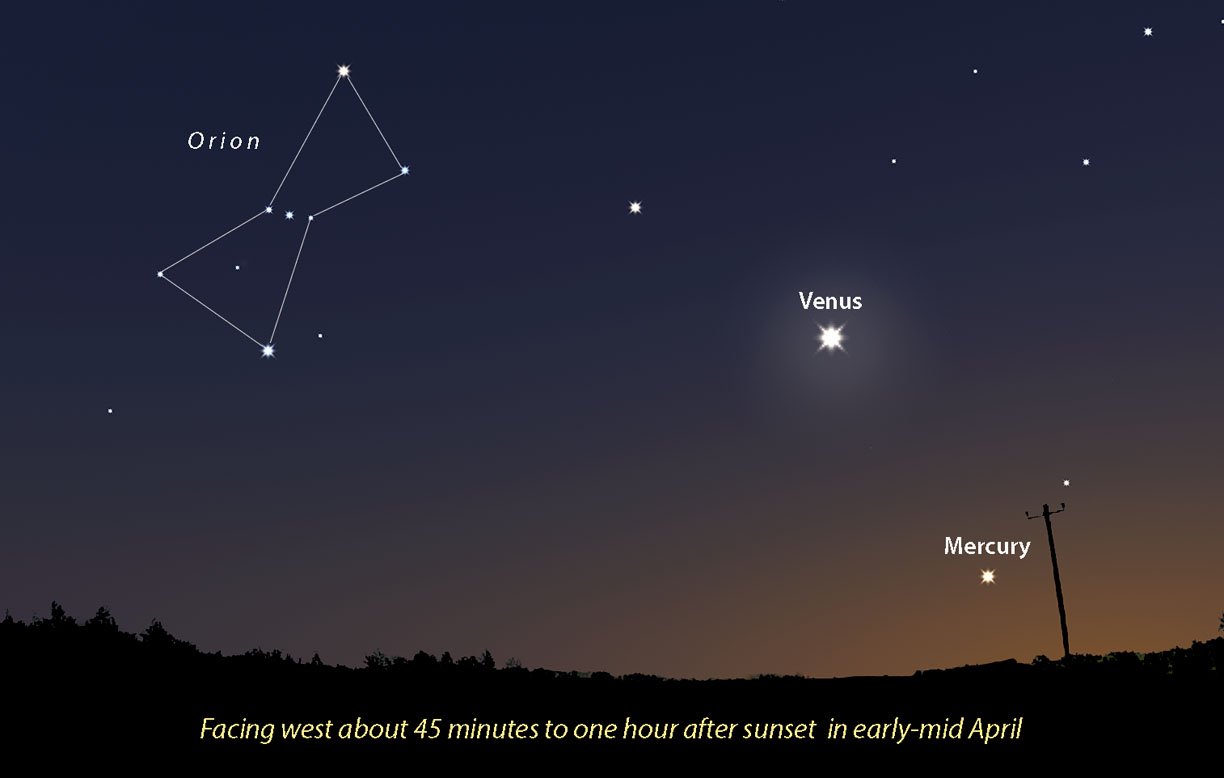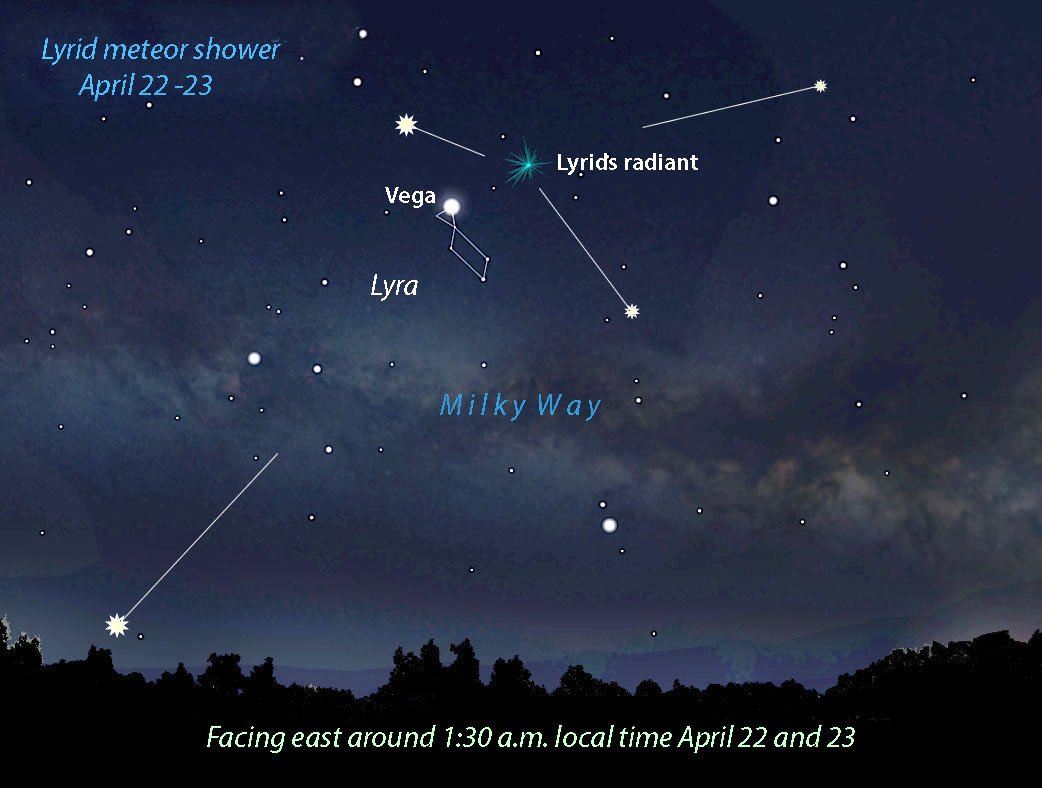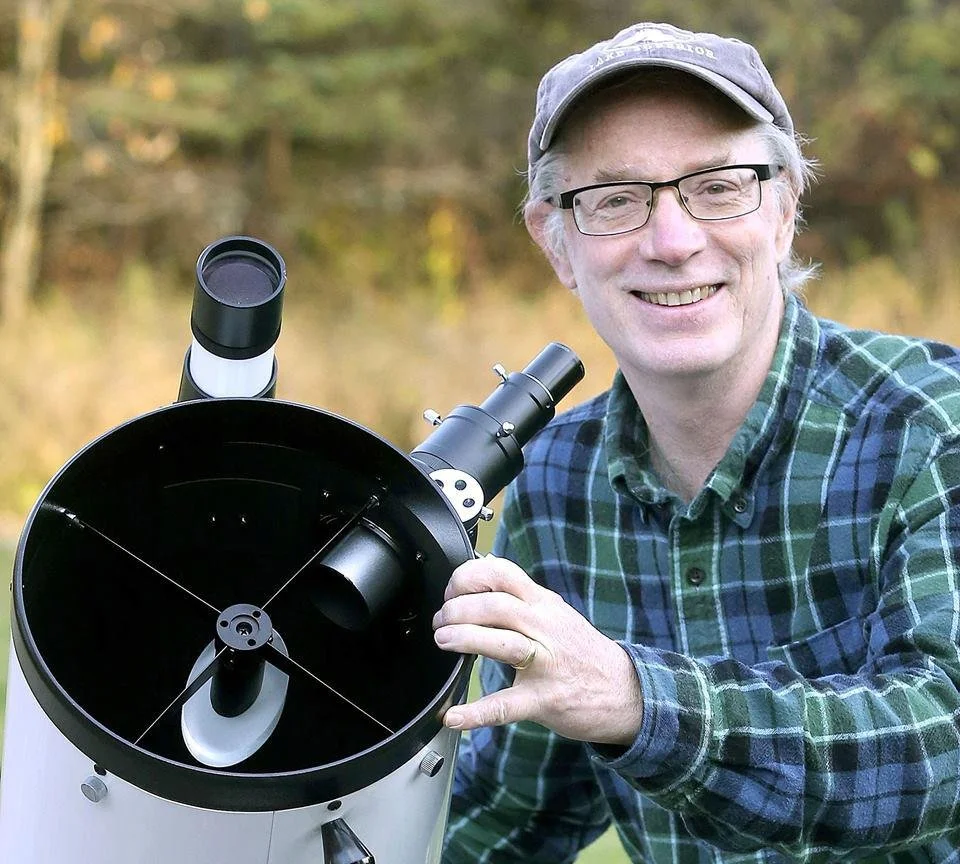April 2023 Night Sky Calendar
We welcome the return of warmer weather and the spring constellations this month. April is also a great time to watch for the northern lights as they tend to occur more frequently in the spring and fall. Leo the lion rules the southern sky at nightfall while brilliant, orange-red Arcturus climbs up the eastern sky.
If you’re up past 10:30 p.m. local time, look low in the northeast and you’ll spot Vega, the brightest star of summer. It makes it initial appearance every April. In the western sky Venus gleams like a shiny sapphire well into the night, setting after 11:30 p.m. at midmonth.
Highlights include the return of Mercury at dusk and the peak of the annual Lyrid meteor shower, our first major shower since the January Quadrantids.
Events:
April 1 – Waxing gibbous moon passes 6° above Leo’s brightest star, Regulus
April 5 – Full Pink Moon
April 10 (early a.m.) – Waning gibbous moon passes just 1° to the east (left) of Antares, the brightest star in Scorpius early this morning
April 5-15 – Best time to see Mercury, visible low in the evening sky around 45 minutes after sunset. Hold your fist at arm’s length against the sky and look about two fists to the lower right of much brighter Venus. April 9-12 – Venus passes below and then just to the left of the Pleiades star cluster, the one shaped like a little dipper. Best views start about 90 minutes after sunset. Face west. Venus is unmistakable and looks like an incredibly bright “star.” Binoculars will give a wonderful view!
April 13 – Last quarter moon
April 16 (early a.m.) – Waning crescent moon slides about 5° below Saturn low in the southeastern sky during morning twilight.
April 19 – New moon
April 20 – Annular-total solar eclipse visible from parts of Australia and Indonesia
April 21, 22 – Peak of the annual Lyrid meteor shower. With no moon to wash out the sky, conditions are ideal. Shower meteors originate from Comet Thatcher with about 15 meteors visible per hour coming from the direction of the bright star Vega. Watch late on April 21 into the early morning hours of April 22 and again from April 22 into the wee hours of April 23. Face your reclining chair east, lay back and enjoy!
April 22, 23 – Slender crescent moon passes below Venus on April 22 and then above the planet on the April 23.
April 25 – Thick crescent moon in conjunction with Mars. Both appear directly below Gemini’s two brightest stars, Pollux (left) and Castor.
April 27 – First quarter moon
April 29 – Waxing gibbous moon passes 5° to the upper left of Leo’s brightest star, Regulus.
Bob King is an amateur astronomer, author, and passionate educator. He served as a photographer and photo editor at the Duluth News Tribune for 39 years and taught at the UMD planetarium. Bob’s work had a great impact on Voyageurs National Park. To achieve International Dark Sky Park certification, the park was required to host dark sky education events. Through the Night Sky Explorer webinars, the Conservancy was able to fulfill this component and help secure the certification for Voyageurs National Park. We can’t thank Bob King enough for sharing his talents and knowledge with the Conservancy community to support dark sky preservation.





